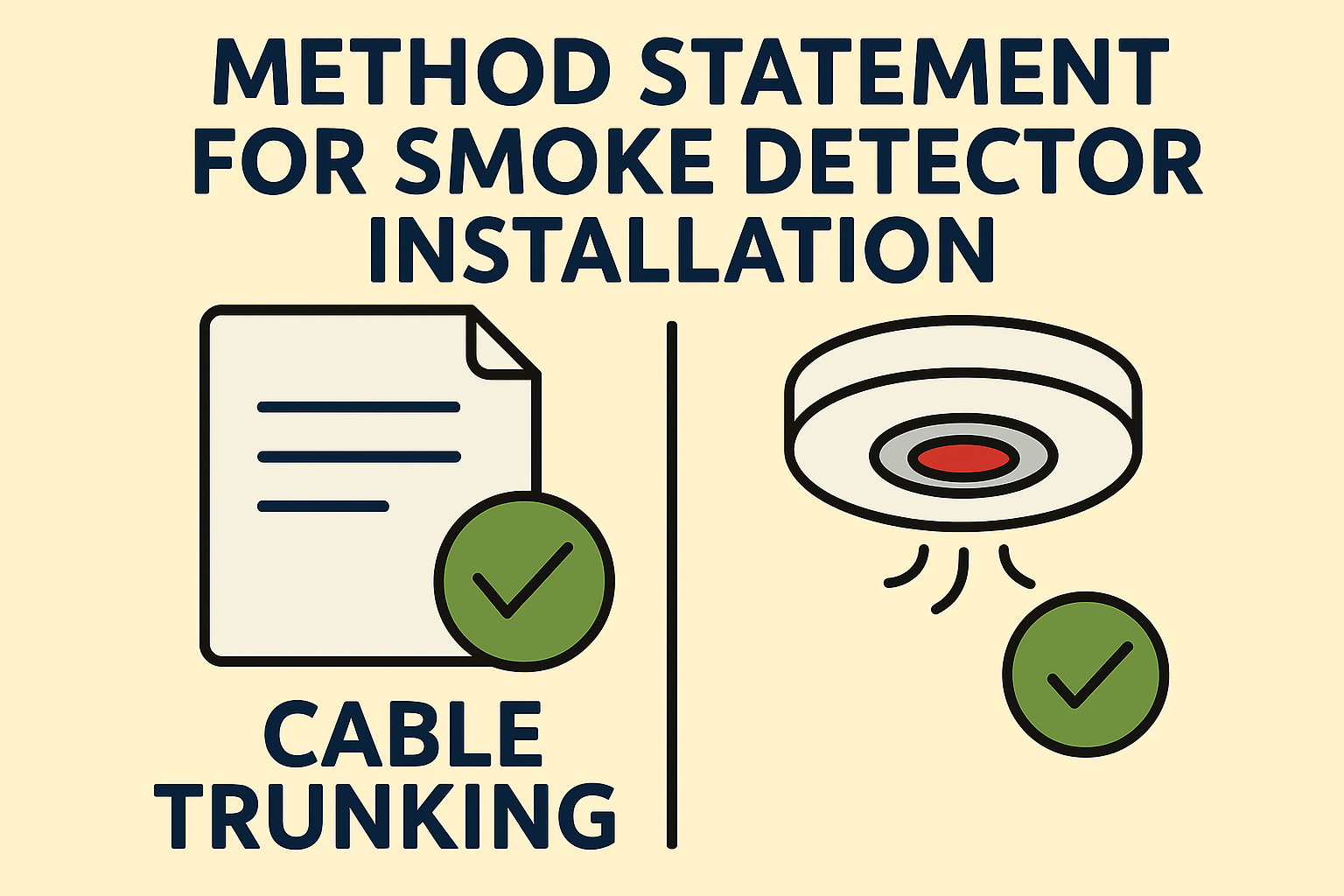Method Statement for Smoke Detector Installation
1. Introduction
This method statement outlines the procedure for the safe and correct installation of smoke detectors in accordance with relevant standards (e.g., NFPA 72, BS 5839, local fire safety regulations).
2. Scope of Work
The scope includes:
- Site assessment and planning
- Mounting and fixing smoke detectors
- Electrical wiring and connections (if applicable)
- Testing and commissioning
3. Responsibilities
- Project Manager/Supervisor: Oversees compliance with safety and quality standards.
- Technicians/Electricians: Perform installation and testing.
- Safety Officer: Ensures adherence to safety protocols.
4. Tools & Materials Required
- Smoke detectors (ionization/photoelectric/combined)
- Mounting brackets & screws
- Wiring cables (if hardwired)
- Cable clips/conduits
- Drill machine & bits
- Screwdrivers, wire strippers, multimeter
- Ladder/scaffolding (if needed)
- PPE (safety helmet, gloves, goggles, etc.)
5. Installation Procedure
5.1 Pre-Installation Checks
- Verify approved drawings and detector locations.
- Ensure power supply is isolated (for wired detectors).
- Confirm ceiling/wall suitability for mounting.
5.2 Mounting the Smoke Detector
- Mark Positions:
- Follow spacing guidelines (typically 30 ft between detectors, 4-12 inches from ceiling for wall mounts).
- Avoid placement near air vents, fans, or corners.
- Fix Mounting Bracket:
- Drill holes and secure the base using appropriate screws.
- Ensure a firm fit without obstruction.
- Wiring (for Hardwired Detectors):
- Run cables through conduits (if required).
- Connect wires as per manufacturer’s instructions (typically line, neutral, interconnect for alarms).
- Secure connections with wire nuts.
- Attach Detector:
- Align and twist the detector onto the base until it locks.
5.3 Battery-Powered Detectors
- Insert batteries and test before final mounting.
6. Testing & Commissioning
- Functional Test: Press the test button to ensure alarm activation.
- Smoke Test (if required): Use approved aerosol smoke to verify sensor response.
- Interconnection Test (for multiple detectors): Check if all units trigger when one detects smoke.
- Documentation: Record test results and update the fire alarm log.
7. Safety Precautions
- De-energize circuits before wiring.
- Use PPE and safe access equipment.
- Follow local electrical and fire safety codes.
8. References
- NFPA 72 (National Fire Alarm and Signaling Code)
- BS 5839 (Fire detection and alarm systems for buildings)
- Manufacturer’s installation guidelines
9. Approval
Prepared by: ______________________ (Name & Signature)
Approved by: ______________________ (Name & Signature)
Date: ___________
This method statement ensures a standardized and compliant approach to smoke detector installation. Adjustments may be needed based on project-specific requirements.

